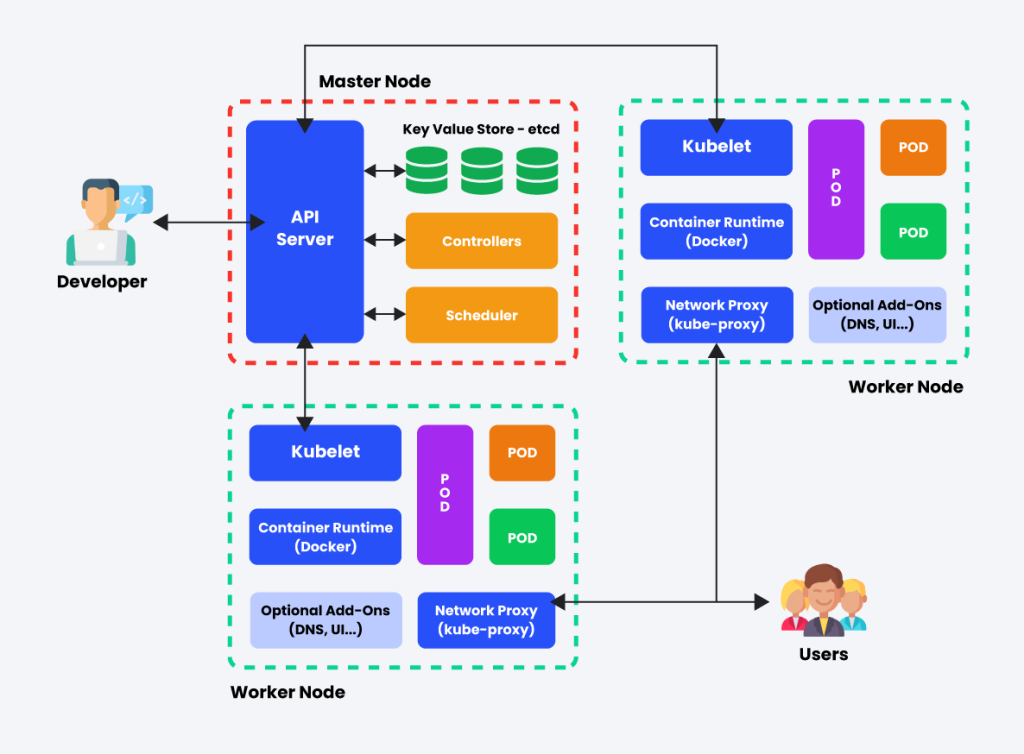Unlock The Potential: Exploring The Latest Technology Trends In Microservices
Latest Technology Trends in Microservices
Greetings, Readers! In this article, we will delve into the latest technology trends in microservices, a concept that has revolutionized software development and deployment. Microservices architecture involves breaking down complex applications into smaller, independently deployable services that communicate with each other through APIs. This approach offers numerous benefits such as scalability, agility, and fault tolerance. Now, let’s explore the key trends shaping the world of microservices.
1. Containerization 📦
2 Picture Gallery: Unlock The Potential: Exploring The Latest Technology Trends In Microservices


Containerization has gained immense popularity in the world of microservices. Containers provide a lightweight and portable environment for deploying microservices. Technologies like Docker enable developers to package their microservices along with all their dependencies into a single container. This simplifies deployment across different environments and improves scalability and resource utilization.
2. Serverless Computing ☁️
The rise of serverless computing has also influenced microservices architecture. Serverless platforms, such as AWS Lambda and Azure Functions, allow developers to focus on writing code without worrying about infrastructure management. By embracing serverless, organizations can achieve better scalability, reduced costs, and faster time to market for their microservices-based applications.
3. Event-Driven Architecture 📣

Image Source: techment.com
Event-driven architecture has become a popular choice for developing microservices-based systems. In this approach, microservices communicate with each other by emitting and consuming events. This decoupled communication style enables better scalability and flexibility, as each microservice can independently react to events and perform its designated task.
4. Blockchain Integration 🏦
The integration of microservices with blockchain technology is another emerging trend. Blockchain provides a decentralized and transparent way of storing and verifying transactions. By leveraging microservices architecture, organizations can build scalable and secure blockchain applications, facilitating processes such as supply chain management, identity verification, and smart contracts.
5. Artificial Intelligence and Machine Learning 🤖
Image Source: licdn.com
Artificial intelligence (AI) and machine learning (ML) are finding their way into microservices-based systems. By incorporating AI and ML capabilities into microservices, organizations can enhance decision-making, automate tasks, and improve user experiences. For example, chatbots powered by AI can be integrated as microservices to provide personalized customer support.
6. DevOps Integration 🔄
The integration of microservices and DevOps practices is crucial for successful implementation. DevOps emphasizes collaboration and automation between development and operations teams, enabling faster and more frequent deployment of microservices. By adopting DevOps principles, organizations can achieve continuous integration, delivery, and deployment, ensuring smooth operation of their microservices-based applications.
What are the Latest Technology Trends in Microservices?
The latest technology trends in microservices include containerization, serverless computing, event-driven architecture, blockchain integration, AI and ML incorporation, and DevOps integration.
Who is Benefiting from these Trends?

Image Source: sayonetech.com
These trends benefit organizations across various industries, including e-commerce, finance, healthcare, and more. Startups, as well as established enterprises, can leverage these trends to develop scalable, resilient, and innovative applications.
When Should Organizations Consider Adopting Microservices?
Organizations should consider adopting microservices when they need to enhance the scalability, agility, and fault tolerance of their applications. Microservices are particularly beneficial for complex and rapidly evolving systems.
Where Can Microservices be Implemented?
Microservices can be implemented both on-premises and in the cloud. Cloud platforms like AWS, Azure, and Google Cloud offer a wide range of services and tools to support the development and deployment of microservices-based applications.
Why are Microservices Gaining Popularity?
Microservices are gaining popularity due to their ability to enable faster development cycles, independent scalability, fault isolation, and improved system resilience. They also allow organizations to adopt new technologies and languages without disrupting the entire system.
How to Successfully Implement Microservices?
Successful implementation of microservices requires careful planning, designing services around business capabilities, setting up proper communication mechanisms, implementing automated testing and deployment pipelines, and monitoring the system’s performance and health.
Advantages and Disadvantages of Microservices
Advantages:
Scalability: Microservices enable independent scalability, allowing organizations to handle variable workloads efficiently.
Flexibility: Microservices allow the use of different technologies and languages for different services, ensuring the best fit for each component.
Fault Isolation: If a microservice fails, it doesn’t impact the entire system, ensuring better fault tolerance.
Continuous Deployment: Microservices architecture facilitates continuous deployment, enabling organizations to release new features faster.
Improved Resilience: Microservices can recover independently from failures, enhancing the overall resilience of the system.
Disadvantages:
Increased Complexity: Managing a large number of microservices and their interactions can be complex and challenging.
Distributed Communication: Communication between microservices introduces additional complexity, requiring robust error handling and fault tolerance mechanisms.
Operational Overhead: Each microservice requires its own infrastructure, which can lead to increased operational overhead.
Data Consistency: Ensuring data consistency across multiple microservices can be challenging and requires careful design and implementation.
Testing Complexity: Testing a system composed of multiple microservices requires comprehensive testing strategies and tools.
Frequently Asked Questions (FAQ)
1. Can microservices be used with monolithic applications?
Yes, microservices can be gradually introduced into a monolithic application. Organizations can start by identifying individual components that can be extracted as microservices and gradually refactor the application.
2. Are microservices suitable for small projects?
Microservices are more suitable for complex and large-scale projects. For small projects, a monolithic architecture might be more efficient and easier to maintain.
3. How do microservices handle data consistency?
Ensuring data consistency in microservices architecture requires careful design and the use of techniques like event sourcing, distributed transactions, and eventual consistency. Organizations need to evaluate the trade-offs and choose the most suitable approach for their specific requirements.
4. What challenges arise when monitoring microservices-based systems?
Monitoring microservices-based systems can be challenging due to the distributed nature of the architecture. Organizations need to implement comprehensive monitoring solutions that capture and analyze metrics from each microservice and ensure the system’s health and performance.
5. Is it possible to revert to a monolithic architecture from microservices?
Reverting to a monolithic architecture from microservices can be complex and requires careful planning and refactoring. Organizations should consider the implications, such as potential disruptions to the system and the reasons for the reversion.
Conclusion
In conclusion, the latest technology trends in microservices, including containerization, serverless computing, event-driven architecture, blockchain integration, AI and ML incorporation, and DevOps integration, are transforming the way applications are developed and deployed. By embracing these trends, organizations can achieve greater scalability, flexibility, and resilience in their systems. However, it is crucial to consider the advantages and disadvantages of microservices and carefully plan their implementation to ensure success.
So, what are you waiting for? Start exploring the world of microservices and unlock the full potential of your applications!
Disclaimer: The information provided in this article is for general informational purposes only. The views and opinions expressed in this article are those of the author and do not necessarily reflect the official policy or position of any company or organization.
This post topic: Latest Technology Trends
